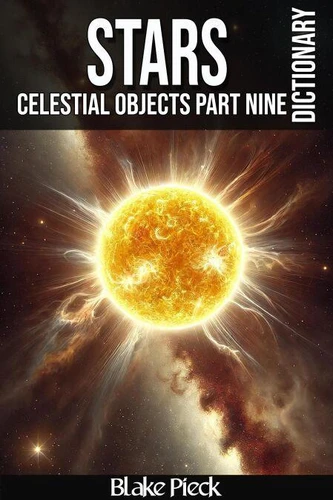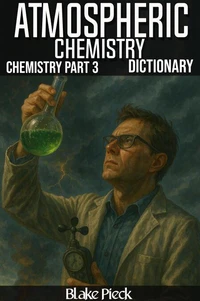Stars Dictionary. Grow Your Vocabulary
Par :Formats :
Disponible dans votre compte client Decitre ou Furet du Nord dès validation de votre commande. Le format ePub est :
- Compatible avec une lecture sur My Vivlio (smartphone, tablette, ordinateur)
- Compatible avec une lecture sur liseuses Vivlio
- Pour les liseuses autres que Vivlio, vous devez utiliser le logiciel Adobe Digital Edition. Non compatible avec la lecture sur les liseuses Kindle, Remarkable et Sony
 , qui est-ce ?
, qui est-ce ?Notre partenaire de plateforme de lecture numérique où vous retrouverez l'ensemble de vos ebooks gratuitement
Pour en savoir plus sur nos ebooks, consultez notre aide en ligne ici
- FormatePub
- ISBN8230452393
- EAN9798230452393
- Date de parution03/03/2025
- Protection num.pas de protection
- Infos supplémentairesepub
- ÉditeurIndependently Published
Résumé
Stars - Celestial Objects, Luminous Spheres, Stellar Evolution - A star is a massive, luminous sphere of plasma held together by gravity, with energy produced through nuclear fusion in its core. Stars vary in size, temperature, brightness, and lifespan, depending on their mass. They are classified using the spectral classification system (O, B, A, F, G, K, M), with O-type stars being the hottest and M-type stars the coolest.
The Sun, a G-type main-sequence star, is the closest star to Earth and provides the heat and light necessary for life. Stars are born in nebulae, where gravity causes clouds of gas to collapse, forming protostars that eventually ignite nuclear fusion. Throughout their lifetimes, stars evolve based on their mass-low-mass stars become red giants before shedding their outer layers as planetary nebulae and becoming white dwarfs, while massive stars explode as supernovae, leaving behind neutron stars or black holes.
Stars are the primary sources of chemical elements, synthesizing heavier elements through nuclear fusion and enriching the universe with carbon, oxygen, iron, and other elements essential for planets and life. Modern telescopes, including JWST and Hubble, study stars across the universe, helping astronomers understand stellar evolution, galaxy formation, and the origins of planetary systems.
The Sun, a G-type main-sequence star, is the closest star to Earth and provides the heat and light necessary for life. Stars are born in nebulae, where gravity causes clouds of gas to collapse, forming protostars that eventually ignite nuclear fusion. Throughout their lifetimes, stars evolve based on their mass-low-mass stars become red giants before shedding their outer layers as planetary nebulae and becoming white dwarfs, while massive stars explode as supernovae, leaving behind neutron stars or black holes.
Stars are the primary sources of chemical elements, synthesizing heavier elements through nuclear fusion and enriching the universe with carbon, oxygen, iron, and other elements essential for planets and life. Modern telescopes, including JWST and Hubble, study stars across the universe, helping astronomers understand stellar evolution, galaxy formation, and the origins of planetary systems.
Stars - Celestial Objects, Luminous Spheres, Stellar Evolution - A star is a massive, luminous sphere of plasma held together by gravity, with energy produced through nuclear fusion in its core. Stars vary in size, temperature, brightness, and lifespan, depending on their mass. They are classified using the spectral classification system (O, B, A, F, G, K, M), with O-type stars being the hottest and M-type stars the coolest.
The Sun, a G-type main-sequence star, is the closest star to Earth and provides the heat and light necessary for life. Stars are born in nebulae, where gravity causes clouds of gas to collapse, forming protostars that eventually ignite nuclear fusion. Throughout their lifetimes, stars evolve based on their mass-low-mass stars become red giants before shedding their outer layers as planetary nebulae and becoming white dwarfs, while massive stars explode as supernovae, leaving behind neutron stars or black holes.
Stars are the primary sources of chemical elements, synthesizing heavier elements through nuclear fusion and enriching the universe with carbon, oxygen, iron, and other elements essential for planets and life. Modern telescopes, including JWST and Hubble, study stars across the universe, helping astronomers understand stellar evolution, galaxy formation, and the origins of planetary systems.
The Sun, a G-type main-sequence star, is the closest star to Earth and provides the heat and light necessary for life. Stars are born in nebulae, where gravity causes clouds of gas to collapse, forming protostars that eventually ignite nuclear fusion. Throughout their lifetimes, stars evolve based on their mass-low-mass stars become red giants before shedding their outer layers as planetary nebulae and becoming white dwarfs, while massive stars explode as supernovae, leaving behind neutron stars or black holes.
Stars are the primary sources of chemical elements, synthesizing heavier elements through nuclear fusion and enriching the universe with carbon, oxygen, iron, and other elements essential for planets and life. Modern telescopes, including JWST and Hubble, study stars across the universe, helping astronomers understand stellar evolution, galaxy formation, and the origins of planetary systems.























